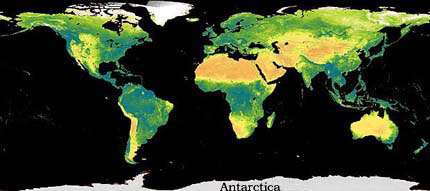Land Management and Climate Change

Coincidentally, one of the first contacts I formed at the onset of 2GreenEnergy in 2009 was Abe Collins, who made the very same basic point as Savory, and it’s perhaps the greatest paradox concerning the management of these huge regions of land on which rainfall is relatively scarce:
Running vast herds of large animals on it has incredibly beneficial effects in terms of keeping it lush and green, principally by trampling down grasses, and integrating these materials, along with dung and urine, into the soil, so as to absorb and retain moisture for use the following season. In the absence of this activity, rain either quickly runs off or is evaporated back into the atmosphere.
Are these ideas controversial? Apparently so; a Google search will turn up significant opposition. But based on my reading, I believe these ideas are firmly based on science (as discussed further here).
Now, of course, once we’re convinced of the validity of the theory, what do we do? If nothing else, it changes the way we need to think about animal farming. Currently, environmentalists and humanitarians have many reasons to oppose the cultivation of beef. Yet imagine that it’s possible to eliminate factory farming in favor of grazing huge numbers of cows (as well as sheep, pigs, etc.) on the vast deserts in North and South America, Africa and Asia. Immediately, we have a startling new calculus:
• The mass cruelty associated with this practice is greatly ameliorated, and
• Instead of ruining the planet with deforestation, we’re actively helping it repair itself.
Yet just think about the ferocity of the opposition with which the meat industry is going to address this new challenge. Growing beef in tightly confined spaces will always be a far less expensive option than anything remotely resembling what we’re contemplating here.
As always, it comes down to the same issue: is our civilization prepared to make sacrifices to preserve a high quality of life on Earth? I’d love to say yes, but I can’t think of a single precedent.

Craig,
You seem to have a very confused understanding of of agricultural practices in general, and beef production in particular.
One of the problems with people who don’t actually live and work with animals is the assumptions that what suits a human, suits an animal.
What may be cruel to a human, may be considered terrific by a cow pig, or sheep. I suppose it’s understandable for folk who have lived all their lives in a city to imagine and assume animals, share the aesthetic aspirations of humans and humanized pets.
When cattle cattle are feed grain, it adds immensely to the animal’s sense of pleasure. Cattle regard grain in the same way as we regard ice-cream and cake. Nor do cattle like “running free” over the prairie.
In fact cattle are very sedentary animals, only moving with great reluctance to seek shelter, food and water. Sheep are even less willing to exercise except in pursuit of food or water.
Feeding a Cow a diet of grain can be unhealthy for the cow in the long term, as an animal whose dietary system is designed to digest grass, will, like humans, struggle with too much rich food and not enough roughage.
In reality, these problems don’t arise since most cattle are slaughtered before any detrimental health effects appear in old age!
Another delusion you seem to have acquired is the nature of “factory cattle farms”.
Cattle all over the world are usually pasture raised on grass alone. In the US, Asia and Europe feed lot “finishing (fattening)” has become popular for an increasing number of cattle, but this only represents a short period of the animals life-cycle.
Most cattle in well operated feed lots are very content and much prefer the luxury of a feed lot to pasture.
Cattle the USA, Canada, Northern Europe and North Asia,have been brought in for shelter and protection during the harsh winter months for hundreds, even thousands, of years.
I’m glad to see you finally taking notice of the environmental value of cattle grazing, even if it’s taken some years for it to sink in 🙂 !
Of course over grazing can be disastrous, as can be bad or negligent feedlot or “factory farming” practices. But these should be the aberrations which occur in any large industry.
Incidentally, “factory” farming cattle from birth to slaughter is neither highly profitable or economic in the US. It’s largely a myth or disinformation, disseminated by animal rights groups, vegetarians etc.
My good news is the ongoing trials of genetically corrected ruminants which produce less than 2% of the methane of their unmodified brethren, is well advanced and proving to be stable and inherited by 94% of offspring. The unlike the first trials, the latest trials reveal promising indications of becoming a permanent inherited breed characteristic.
The trials will continue over the next six years as the technology continues to advance.
The modification, is actually beneficial for animal health and corrects a genetic flaw in the evolution of ruminants.
(Fartless cows! 🙂 )